
TREHALOSE-6-PHOSPHATE SYNTHASE1 – an essential enzyme in Arabidopsis
Research, The Plant Cell, The Plant Cell: In a NutshellFichtner et al. transformed the embryo-lethal mutant tps1 with variants of the TPS1 gene to identify critical domains for function and localization of the gene product. The Plant Cell (2020) https://doi.org/10.1105/tpc.19.00837
By Franziska Fichtner1,2 and John Lunn1, 1Max Planck Institute of Molecular…
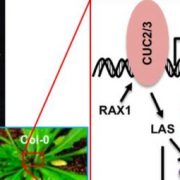
Activate, Breakdown, Branch Out: CUC2/3-DA1-UBP15 Controls Axillary Meristem Initiation
Research, The Plant Cell, The Plant Cell: In BriefShoot architecture is a key ecological and agricultural trait that impacts biomass, the potential to harvest light, planting density, and the reproductive success of a plant. Branching is a prominent feature of plant shoot architecture. A shoot branch develops from an axillary bud, which is located in…
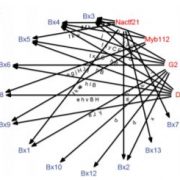
Drawing in the Net: Forty-Five Maize Gene Regulatory Networks from Over 6,000 RNA-Seq Samples
Research, The Plant Cell, The Plant Cell: In BriefEukaryotic gene expression is largely governed by transcription factors (TFs), the nuclear proteins that bind to specific DNA sequences and determine when and where genes are turned on. Transcriptional gene regulatory networks (GRNs) that modulate developmental processes and environmental responses consist…
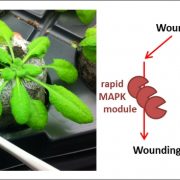
Ouch! Plant perception of wounding
Research, The Plant Cell, The Plant Cell: In a NutshellSözen et al. describe two independent MAPK signaling cascades that are each activated with different kinetics, providing an immediate and delayed response to herbivore feeding. The Plant Cell (2020) https://doi.org/10.1105/tpc.19.00917
By Cécile Sözen, Marie Boudsocq and Jean Colcombet, Université…
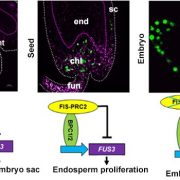
Repression of FUSCA3 by BASIC PENTACYSTEINE PROTEINS promotes ovule development and coordinates embryo and endosperm growth
Research, The Plant Cell, The Plant Cell: In a NutshellWu et al. found that FUSCA3, which regulates seed development, is localized to specific cells of the ovule and seed coat and is itself regulated by BASIC PENTACYSTEINE (BPC) proteins. Plant Cell https://doi.org/10.1105/tpc.19.00764
By Sonia Gazzarrini (University of Toronto, Dept. Biological Sciences…

Cytokinin signaling patterns maize leaves, otherwise things get hairy and frayed
Research, The Plant Cell, The Plant Cell: In a NutshellVariation in leaf morphology across the angiosperms is impressive and abounds. Leaves are the primary photosynthetic organ for most angiosperms, acting as the primary sites of light capture and gas exchange. Typical of grass leaves, maize leaves are strap-like and simple, with unelaborated margins. Leaves…

Recognizing Plant Cell authors: Franziska Fichtner
The Plant Cell, The Plant Cell: Author ProfilesFranziska Fichtner, first author of Functional features of TREHALOSE-6-PHOSPHATE SYNTHASE1 - an essential enzyme in Arabidopsis thaliana
Current Position: Postdoctoral Research Associate, School of Biological Sciences, The University of Queensland, St Lucia, Australia
Education: PhD in Molecular…

Recognizing Plant Cell authors: Ting Ting Xiao
The Plant Cell, The Plant Cell: Author ProfilesTing Ting Xiao, co-first author of A Homeotic Mutation Changes Legume Nodule Ontogeny into Actinorhizal-type Ontogeny
Current position: Postdoc researcher at Biological and Environmental Science and Engineering Division, King Abdullah University of Science and Technology, Saudi Arabia
Education background:…
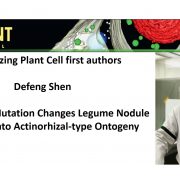
Recognizing Plant Cell authors: Defeng Shen
The Plant Cell, The Plant Cell: Author ProfilesDefeng Shen, co-first author of A Homeotic Mutation Changes Legume Nodule Ontogeny into Actinorhizal-type Ontogeny
Current Position: Postdoctoral researcher, Group of Tonni Grube Andersen, Department of Plant Microbe Interactions, Max Planck Institute for Plant Breeding Research, 50829 Cologne, Germany
Education:…

